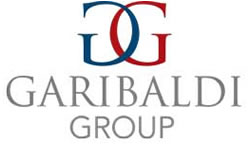It is essential that creditors, managers, and shareholders - as well as the attorneys who advise them - timely identify and respond to signs of a company’s financial distress. Financial distress, according to Investopedia, “is a condition in which a company or individual cannot generate revenue or income because it is unable to meet or cannot pay its financial obligations. This is generally due to high fixed costs, illiquid assets, or revenues sensitive to economic downturns.” Common signs of financial distress include negative or poor sales or profit growth; delays and defaults in paying creditors; increased costs of capital; and negative or breakeven cash flows. Failure to recognize such signs can imperil a company’s lenders, creditors, and/ or shareholders by leading to illiquidity, insolvency, and/or liquidation.
Purpose and Definitions
Financial distress is often evident from analyzing the company’s statement of cash flows (Statement). The Statement’s purpose is to directly and/or indirectly reflect cash receipts classified by major sources and cash payments classified by major uses (Financial Accounting Standards Board [FASB] Statement of Financial Accounting Concepts No. 5) - that is, from what sources is cash received, and for what purposes is cash used?
The Statement provides information on all cash receipts and disbursements, and noncash investing and financing activities during a period. The Statement reflects the changes in cash available compared to an income statement showing “profit,” whether or not that “profit” was collected in cash. A profitable company can be cash-starved due to poor collections and unable to generate enough cash to sustain ongoing operations.
FASB and the SEC require the State
ment; even small, non-public companies must include the Statement within their annual financial statements (FASB Standard 95, subsequently codified in FASB ASC 230).
ASC 230 generally defines operating cash inflows as cash receipts from sales of goods or services; from returns on loans, other debt instruments of other entities, and equity securities; and from all other cash receipts that do not originate from transactions defined as investing or financing activities. Operating cash outflows are defined as cash payments to acquire raw materials for manufacture or products for resale; to other suppliers and employees for other products or services; to governments for taxes, duties, fines, and other fees or penalties; to lenders or other creditors for interest; to settle an asset retirement obligation; and all other cash payments that do not originate from transactions defined as investing or financing activities.
ASC 230 generally defines investing cash inflows as cash receipts from collections or sales of loans and debt instruments; from sales of equity instruments of other entities; from returns of investment in those instruments; from sales of property, plant and equipment; and from sales of loans that were not specifically acquired for resale. Investing cash outflows are cash disbursements
for loans made and payments to acquire debt or equity instruments of other entities; and to acquire property, plant, and equipment.
ASC 230 generally defines financing cash inflows as proceeds from the issuance of equity instruments; proceeds from the issuance of bonds, mortgages, notes, and other short- or long-term borrowing; and proceeds received from derivative instruments that include financing elements at inception. Financing cash outflows are payments of dividends or other distributions to owners; repayments of principal amounts borrowed; and payments for debt issue costs.
Accounting Shenanigans
Analysts evaluate cash flows from operations as indicative of a company’s cashgenerating capacity. To the extent that a company has healthy operating cash flows, the company is seen to possess the financial health to be able to internally finance future growth, repay debt, redeem its shares, and pay dividends. However, some managers use accounting shenanigans to exaggerate operating cash flows to mislead investors and creditors into a false sense of security about a company’s prospects.
Howard M. Schilit, Ph.D., CPA, a pioneer in the field of detecting accounting tricks in corporate financial reports, has written extensively about “accounting shenanigans” in annual financial statements. Dr. Schilit defines accounting shenanigans as actions taken by management that mislead investors about a company’s financial performance or economic health. He identifies the following four shenanigans that can mischaracterize cash Hows:
- Shifting financing cash inflows to the operating section of the Statement by inflating cash flows from operations by mischaracterizing transactions as operating cash inflows such as proceeds from a normal collateralized bank borrowing mischaracterized as a sale of the underlying collateral; selling or borrowing against receivables before they are due; and omitting disclosures about selling receivables with the company retaining the risk of non-collectability.
- Mischaracterizing operating cash outflows as investing, thus overstating reported operating cash inflows and understating reported investing cash inflows; reporting “boomerang” transactions that lack economic substance between the company and its customers; improper capitalization of normal operating costs as investing in a of normal operating costs as investing in a longlived asset rather than as an expense; and portraying purchases of inventory as if it were an investing activity.
- Inflating operating cash flow using business acquisitions or disposals; inheriting the acquiree’s operating cash inflows in normal business acquisitions financed by the acquirer using its own stock to acquire a target company; acquiring contracts or customers rather than developing them internally whereby customer acquisition costs are recorded as operating cash outflows as opposed to an investing cash outflow; and using creative means to structure the sale of a business whereby, for example, the core business is sold with the seller retaining the related receivables that will generate operating cash from sales from a business no longer owned.
- Boosting operating cash flow by engaging in activities that cannot be sustained
over time - such “window dressing” achieved by temporarily boosting cash flow from operations by paying vendors more slowly, ensuring that accounts payable increases at a faster rate than cost of goods sold; temporarily not paying income taxes, salaries and related payroll taxes, sales taxes, and pension or profit sharing plan contributions; and buying less inventory to temporarily increase cash flows from operations.
Key Questions in Analyzing Cash Flow Statements
Analysis of the Statement should answer these questions:
- When has a company generated enough cash from its operating activities? (When it has enough cash to repay short-term liabilities and to make necessary capital investments.)
- When has a company generated excess cash? (When it carries high cash balances and yields high liquidity ratios. Because cash does not generate additional profits or benefit shareholders by producing a return, excess cash reserves can be reinvested to generate future cash returns from short-term interest-bearing investments; pay down debt; reacquire its stock, and/or distribute dividends.)
- When has a company generated insufficient cash ? (When it is unable to pay its debts, itsshort-term liabilities, and/or the current portion of its long-term debt; and when it has insufficient free cash flow to invest in needed productive assets.)
Free cash flow is operating cash that a company generates after subtracting cash required to maintain or expand its asset base by investing in fixed assets. Free cash flow enables a company to pursue additional business opportunities that potentially will generate a return on invested capital. Negative free cash flow may indicate that the company may be making unusually large investments in capital assets for which not enough operating cash is generated to provide the financing. Negative free cash flows may also evidence financial distress since the shortfall will require either obtaining additional financing through the issuance of debt and/or equity or through the sale of fixed assets or assets held for investment.
Action Steps to Identify Financial Distress
Action steps to analyze a Statement to identify financial distress could include:
- Chart the caption totals of the Statement side-by-side for the last five to ten years.
- Analyze variances between years indicating large shifts between the operating. investing, and financing sections of the Statement.
- Determine if the company is reinvesting sufficiently in its productive infrastructure by examining trends in capital expenditures.
- Benchmark trends in cash flows to peer companies.
- Consider whether the company is generating consistent and substantial positive cash flows from operations consistent with corresponding growth in sales and net income.
- Consider whether the company is over-reliant on financing inflows from stock or debt issuances to finance its acquisition of fixed assets or to cover operating cash flow shortages.
- Consider whether management is disinvesting in the company by relying on the sale of assets to generate investing cash flows for the purpose of covering opeiating cash flow shortages.
Not paying attention to the trends in a Statement could jeopardize a sound understanding of a company’s financial condition by missing early signs of financial distress. If these early signs are left unaddressed, they may develop into future financial distress to the detriment of a company’s lenders, creditors and /or shareholders from illiquidity, insolvency, and/or liquidation.
Michael D. Pakter CPA, CFF, CGMA, CFE, CVA, MAFF, CA, CIRA, CDBV, has more than 40 years of experience in accounting and forensic accounting, business economics and investigations in numerous industries and diverse engagements, including more than 20 years of experience in economic damages and business valuations. He has submitted expert reports in several jurisdictions and testified in arbitrations, regulatory proceedings and litigated disputes. State, Federal and Bankruptcy Courts, as well as arbitral bodies, have recognized him as an expert in accounting, financial analysis, forensic accounting, economic damages, business valuation and business economics.
©Copyright - All Rights Reserved
DO NOT REPRODUCE WITHOUT WRITTEN PERMISSION BY AUTHOR.











